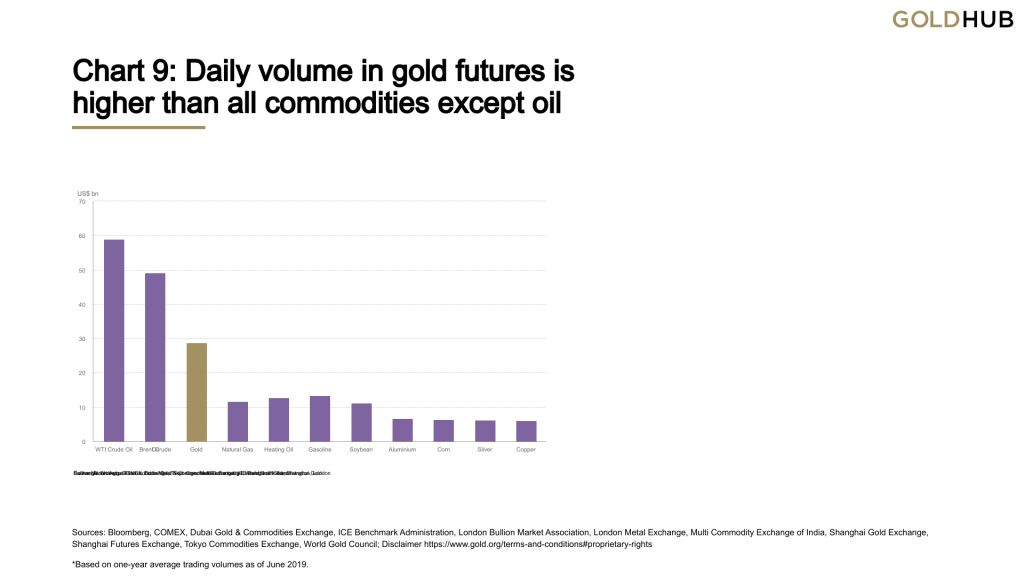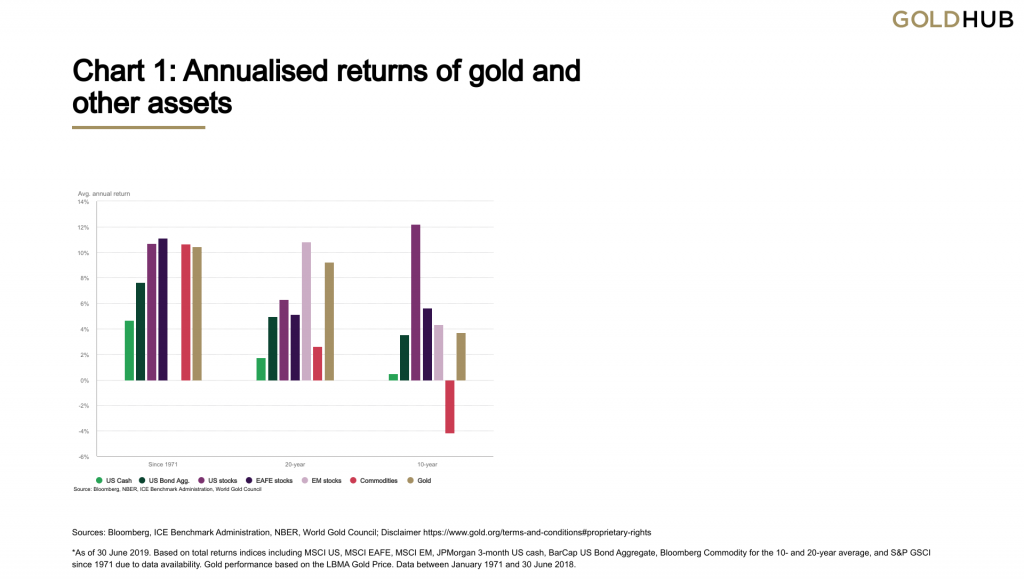Investing in precious metals has been a time-tested strategy for wealth preservation and portfolio diversification, with gold standing out as a perennial favorite among investors. However, the pathways to gain exposure to the gold market are diverse, with two prominent options being investments in gold mining companies and gold derivatives.
Through this we’ll unravel the intricacies of gold mining investments, examining the factors that drive the performance of mining stocks and the potential returns they offer. Simultaneously, we will navigate the complex world of gold derivatives, unraveling the workings of financial instruments that derive their value from the gold market.
Through a comparative analysis, we will also weigh the advantages and disadvantages inherent in both investment strategies, offering readers insights into the unique risks and opportunities associated with each path taken forward. We will try and cover the pros and cons of both strategies and point out the pitfalls to watch out for.
Whether you’re a seasoned investor seeking to refine your gold-centric portfolio or a newcomer eager to grasp the fundamentals, this guide will help you in navigating the complexities of both the gold mining industry as well as the gold derivatives investments.
We will cover the potential rewards, pitfalls, and strategic considerations involved in investing in gold mining companies and gold derivatives. We hope that by the end of this article, you’ll be equipped with the knowledge needed to make informed decisions and tailor your gold investment strategy to align with your financial goals and risk tolerance.
Understanding Gold Mining Investments
Investing in gold mining companies entails a direct stake in the extraction and production of the precious metals. This unique avenue provides investors with exposure to the entire mining process, from exploration and development to production. Gold mining investments are influenced by many factors, including the quality and quantity of gold reserves, operational efficiency, geopolitical considerations, and the overall health of the mining industry. Investors keen on capitalizing on potential profits from the rising value of gold often turn to mining stocks as a means of gaining leverage to the underlying commodity.
However, this strategy comes with its own set of complexities and risks. Sustainable long-term returns hinge not only on the market price of gold but also on the management prowess and strategic decisions of the mining companies themselves.
Exploring Gold Derivatives:
Gold derivatives represent a financial instrument that derives its value from the underlying price movements of gold. These sophisticated financial products offer investors an alternative route to gain exposure to the precious metal without directly owning physical gold. Common types of gold derivatives include futures contracts, options, and swaps, each providing distinct mechanisms for investors to speculate on or hedge against gold price fluctuations. Gold derivatives can be especially appealing due to their liquidity, allowing for ease of trading and maneuverability within financial markets. However, the complexity of these instruments introduces a set of unique challenges, such as counterparty risks and market volatility.
You can see that Gold as a commodity is the 2nd largest gainer after Crude Oil in the commodities market

Advantages of Investing in Gold Mining Companies
Investing in gold mining companies offers several advantages for investors. Firstly, it provides a direct link to the underlying commodity, allowing investors to benefit from increases in the market price of gold. Additionally, gold mining stocks often exhibit leverage, meaning that even modest changes in the price of gold can result in proportionally larger returns for investors in mining companies. Furthermore, these investments offer exposure to potential dividends, as profitable mining operations may distribute earnings to shareholders. Lastly, gold mining stocks can serve as a hedge against inflation and economic uncertainty, as gold is traditionally considered a safe-haven asset. While the sector carries its own set of risks, understanding and capitalizing on these advantages can make investing in gold mining companies an attractive option for those seeking exposure to the precious metal.
Below is an overview of Gold Returns Since 1971 and In Past 20 Years as well as Past 10 Years.

Disadvantages of Investing in Gold Mining Companies
Despite the potential advantages, investing in gold mining companies comes with inherent disadvantages. One notable drawback is the exposure to operational and production risks inherent in the mining industry. Fluctuations in gold prices, geopolitical uncertainties, and unforeseen challenges in extracting and processing gold can impact the profitability of mining ventures. Moreover, the capital-intensive nature of mining operations means that companies may incur substantial debt, and their financial health can be sensitive to changes in interest rates. Environmental and social concerns also pose reputational risks for mining companies. Additionally, the performance of mining stocks can be influenced by factors beyond the control of the investor, such as management decisions and industry-specific regulations. Navigating these challenges requires careful consideration and risk management, making it imperative for investors to weigh both the potential rewards and pitfalls associated with investing in gold mining companies.
Advantages of Investing in Gold Derivatives
Now gold derivatives presents with one key benefit and that is the flexibility they offer, allowing investors to gain exposure to gold price movements without the need to physically own the metal. Gold derivatives, including futures and options contracts, provide a liquid and efficient market for trading, enabling investors to implement various trading strategies. Moreover, the leverage associated with derivatives allows for potential amplified returns, as small price movements in gold can lead to proportionally larger gains. These financial instruments also provide avenues for risk management, allowing investors to hedge against adverse movements in gold prices. Overall, the advantages of investing in gold derivatives lie in their accessibility, versatility, and the ability to tailor investment strategies to specific market conditions and risk preferences.
Disadvantages of Investing in Gold Derivatives
Like everything, investing in gold derivatives comes with its share of disadvantages too. One significant drawback is the complexity associated with these financial instruments, which may pose challenges for inexperienced investors. The leverage that magnifies potential returns also amplifies risks, making derivatives susceptible to rapid and substantial value fluctuations. Counterparty risk is another concern, as derivative contracts often involve agreements with other parties, and the financial health of these counterparties can impact the overall investment. The expiration and rollover of derivative contracts introduce timing considerations that require careful management. Market volatility, unexpected events, and changes in interest rates can also affect the performance of gold derivatives. Given these factors, investors must approach gold derivatives with a thorough understanding of the market dynamics and a clear risk management strategy to navigate the complexities and potential pitfalls associated with these financial instruments.
Comparative Analysis: Gold Mining vs. Gold Derivatives
A comparative analysis between investing in gold mining companies and gold derivatives reveals distinct considerations for investors. Gold mining investments provide a direct connection to the physical extraction of gold, offering exposure to both the commodity’s market price and the operational performance of mining companies. This avenue carries inherent risks related to the mining industry, such as geopolitical factors and operational challenges. On the other hand, gold derivatives offer a financial approach, allowing investors to speculate on or hedge against gold price movements without owning the physical metal. While derivatives provide flexibility and liquidity, they introduce complexities like counterparty risk and the need for a deep understanding of financial markets. One should be familiar with contrasting dynamics of these investment options, emphasizing the trade-offs between direct ownership of gold through mining stocks and the financial instruments that derive their value from gold price fluctuations. You must weigh these factors to align your investment strategies with your risk tolerance and financial objectives.
Risk Management Strategies for Gold Investors
Implementing effective risk management strategies is a must for gold investors seeking profits from the inherent uncertainties in both gold mining and derivatives. Diversification emerges as a fundamental approach, spreading investments across various assets to mitigate the impact of any single investment’s underperformance. Setting clear investment goals and time horizons helps investors tailor their strategies to align with their risk tolerance and financial objectives. In the realm of gold mining, thorough due diligence on mining companies, assessing their financial health and operational efficiency, aids in minimizing exposure to industry-specific risks. For those engaged in gold derivatives, using a combination of options and futures to hedge against adverse price movements can act as a safeguard. Additionally, staying informed about geopolitical events, economic indicators, and global market trends is crucial for making informed decisions in response to changing conditions. By adopting a comprehensive and proactive risk management approach, gold investors can enhance their ability to weather market volatility and optimize their portfolios for long-term success.
So overall the decision to invest in either gold mining companies or gold derivatives involves a careful evaluation of the distinct advantages and disadvantages associated with each avenue. Gold mining investments offer a direct link to the physical extraction of gold, providing potential returns influenced by both the commodity’s market price and the operational performance of mining companies. However, this comes with exposure to industry-specific risks, geopolitical uncertainties, and management challenges. On the other hand, gold derivatives present a financial approach, offering flexibility and liquidity but introducing complexities like counterparty risk and the need for financial market acumen. The comparative analysis underscores the importance of aligning investment choices with individual risk tolerance and financial goals. Successful investors may opt for a balanced approach, combining elements of both strategies to optimize their portfolios. Ultimately, a thorough understanding of the advantages and disadvantages of investing in gold mining and derivatives empowers investors to make informed decisions, fostering resilience in the face of market fluctuations and contributing to long-term investment success.

